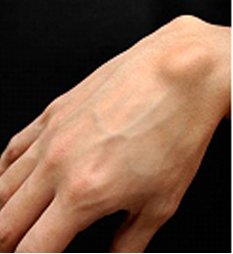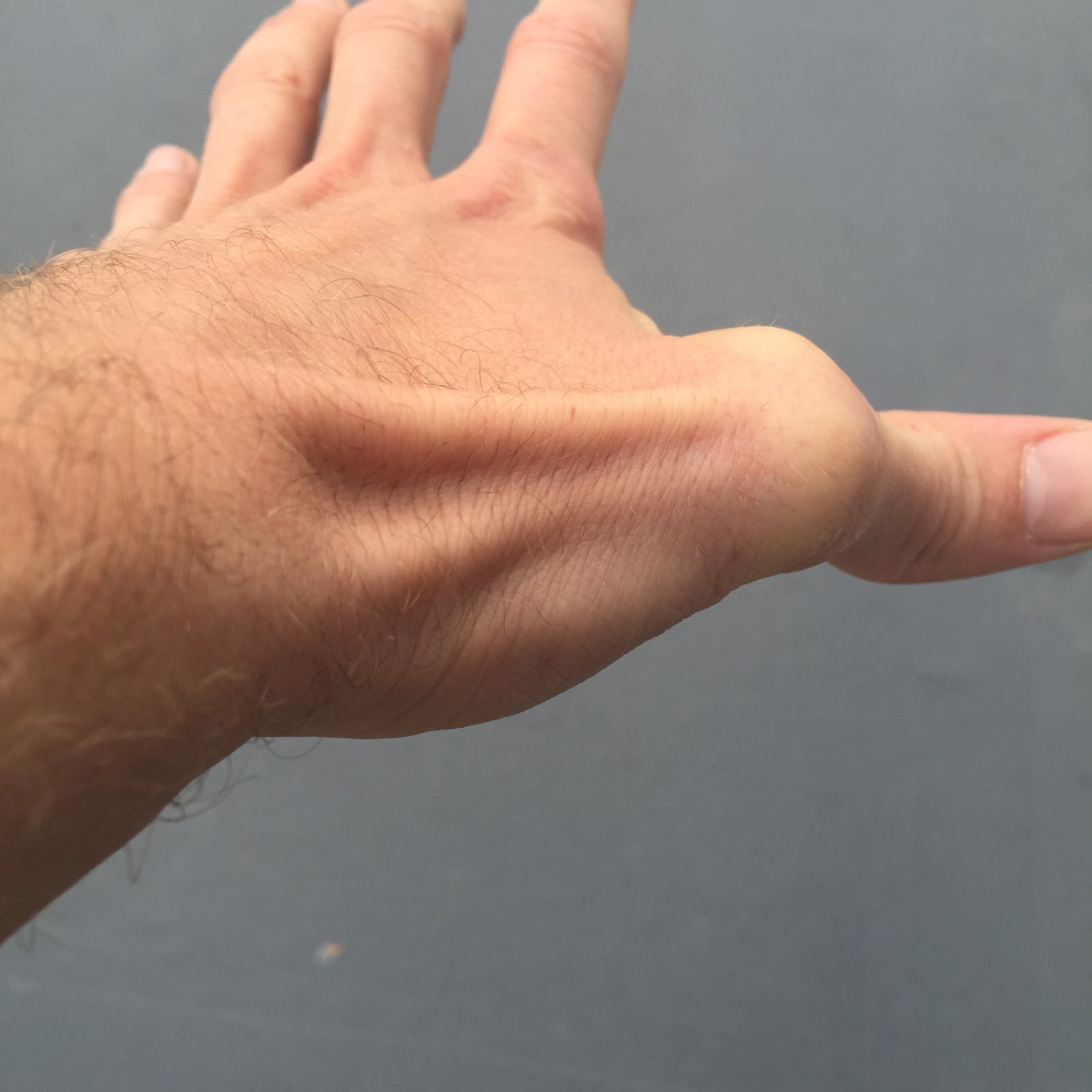Emergency Ortho: Wrist
Gaglion cyst courtesy of The Hand and Wrist Institute that has a good review here.
ATRAUMATIC WRIST PAIN
Not a common complaint. Think tendonitis. Some people might have a ganglion cyst easily palpated on exam. Carpal tunnel impingement occurs in the wrist but usually presents with hand symptoms. Ask about previous fractures or surgeries because a change in anatomy can be a set up for tendon irritation. Most of the common tendonitis presentations will be discussed below in the hand section.
TRAUMATIC WRIST INJURY
Frequently quoted to be the second most common fracture, a distal radius fracture is by far the most common fracture I see in the ED (maybe all those clavicle fractures get seen in the PCP's office). This fracture comes in many types depending on the mechanism and age (i.e. fragility) of the patient. Common types include: Colles', Smith's, dorsal and volar angulated Barton's (line one below), Die-punch, Chauffeur's, and ulnar styloid (line two plus an impacted intra-artciular comminuted distal radius and ulna styloid fracture) to name a few. And this is excluding the common pediatric greenstick or torus fractures. Of course, any fracture should be described thoroughly as intra or extra-articular, angulated, impacted, and/or displaced. All of the following images are form The Radiology Assistant and while in a little more depth than you may need, I think it is worth a read.
Colles Fracture
Smith fracture
Dorsal angulated Barton fracture from https://radiologycases.my/2020/03/31/barton-fracture/
Volar angulated Barton (aka Reverse Barton) fracture from https://litfl.com/barton-fracture/
Die-punch fracture from https://radiologyassistant.nl/musculoskeletal/wrist/fractures
Chauffuer wrist fracture
Ulnar styloid fracture
My own snuff box
Most wrist injuries are going to come in after a FOOSH. Obviously all the above fractures are named after their radiographic findings so you will not miss them, but you can miss a particularly dangerous fracture, the occult scaphoid (aka navicular) fracture, because it does, by definition, not show up plain films. Therefore, you must press on the anatomic snuffbox of every patient after a FOOSH (I document this on every fall even without wrist pain).
Terry-Thomas sign of scapholunate dislocation from https://litfl.com/terry-thomas-sign/
While the sneaky scaphoid fracture gets a lot of attention, there can be other carpal bones injured in FOOSH injuries. In particular, pain at the hypothenar side (opposite the scaphoid) can be a fracture of the hook of the hammate or pisiform fracture. Ever get a carpal tunnel view? Me neither, but the next time I see a patient point tender over the carpals at the base of the hypothenar hand I will get this view. For more about a hook of hamate fracture, check out orthobullets. I didn’t know these often come with direct trauma from a bat or golf club held over this vulnerable bone.
What to document:
R/L handedness
Radial pulse and capillary refill of all digits
Median, radial, and ulnar nerve sensation (two point discrimination) and motor function
Any gross deformities
Snuffbox tenderness, or lack thereof
Elbow and shoulder exam as discussed above, especially the radial head which can also have an occult fracture so press on it!
What to do:
Get x-rays for trauma as usual
Call ortho for any displaced or open fractures that will need the OR
Use the contralateral, uninjured snuffbox as a guide to true tenderness. This exam is not comfortable at baseline.
Think about special x-rays (like carpal tunnel view for hypothenar wrist tenderness or the clenched fist view for scapholunate dissociation).
When in doubt splint and re-radiograph in a week or two. This is usually the way a true navicular fracture is found and there are some subtle variations of fractures, particularly intra-articular that can be missed initially and cause problems down the road.
What not to miss:
Compartment syndrome! This should run through your mind on any and every fracture. The forearm and hands are more common places for compartment syndrome.
Occult scaphoid/navicular fracture. I think I've said snuffbox enough. Make sure it ends up on your charts.
Example PE for traumatic wrist injury:
*** Arm: There is swelling and tenderness of the distal radius and *** obvious deformity of the distal forearm. The skin is intact. Flexion, extension, adduction, abduction of the fingers and thumb including opposition is intact. The fingers are warm and well perfused with good capillary refill. Full range of motion of the elbow without pain. Full range of motion of the shoulder without pain. Clavicles are nontender bilaterally.
All other joints demonstrate normal exams











